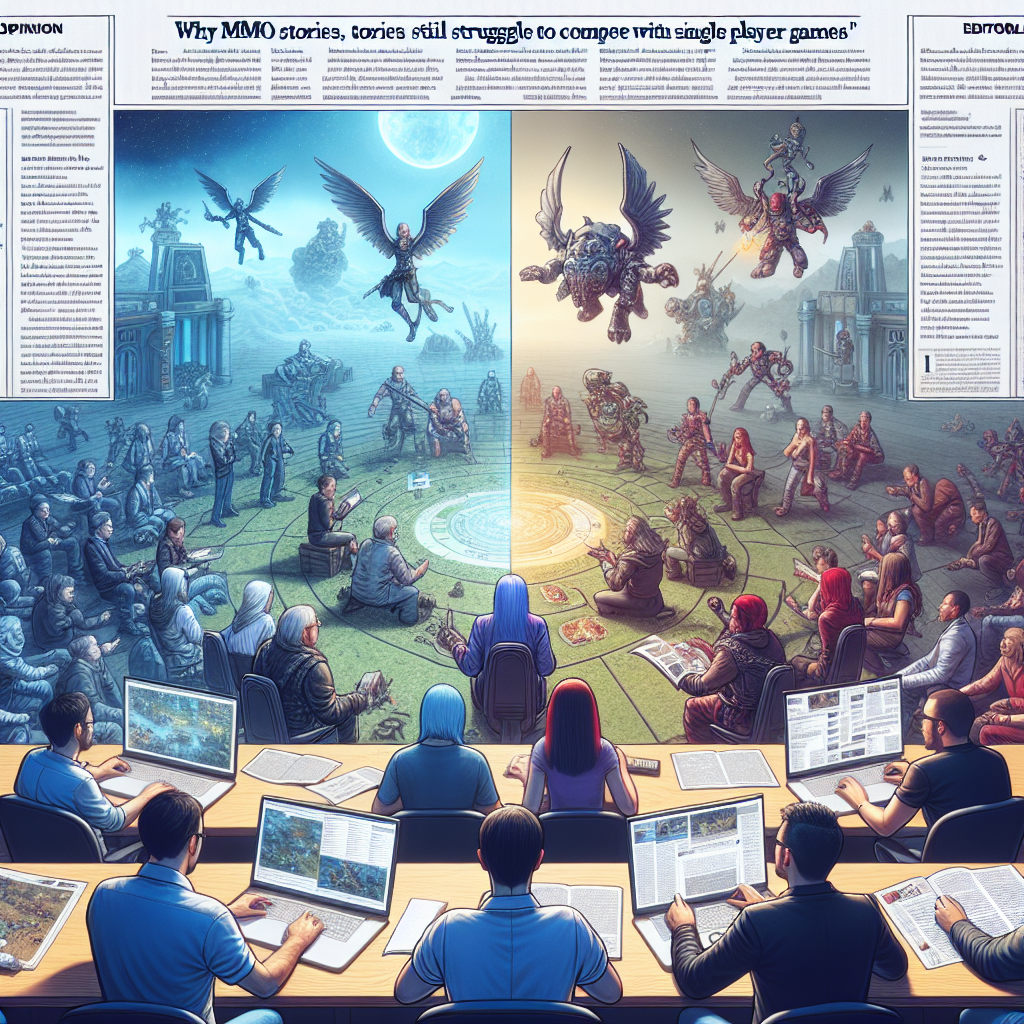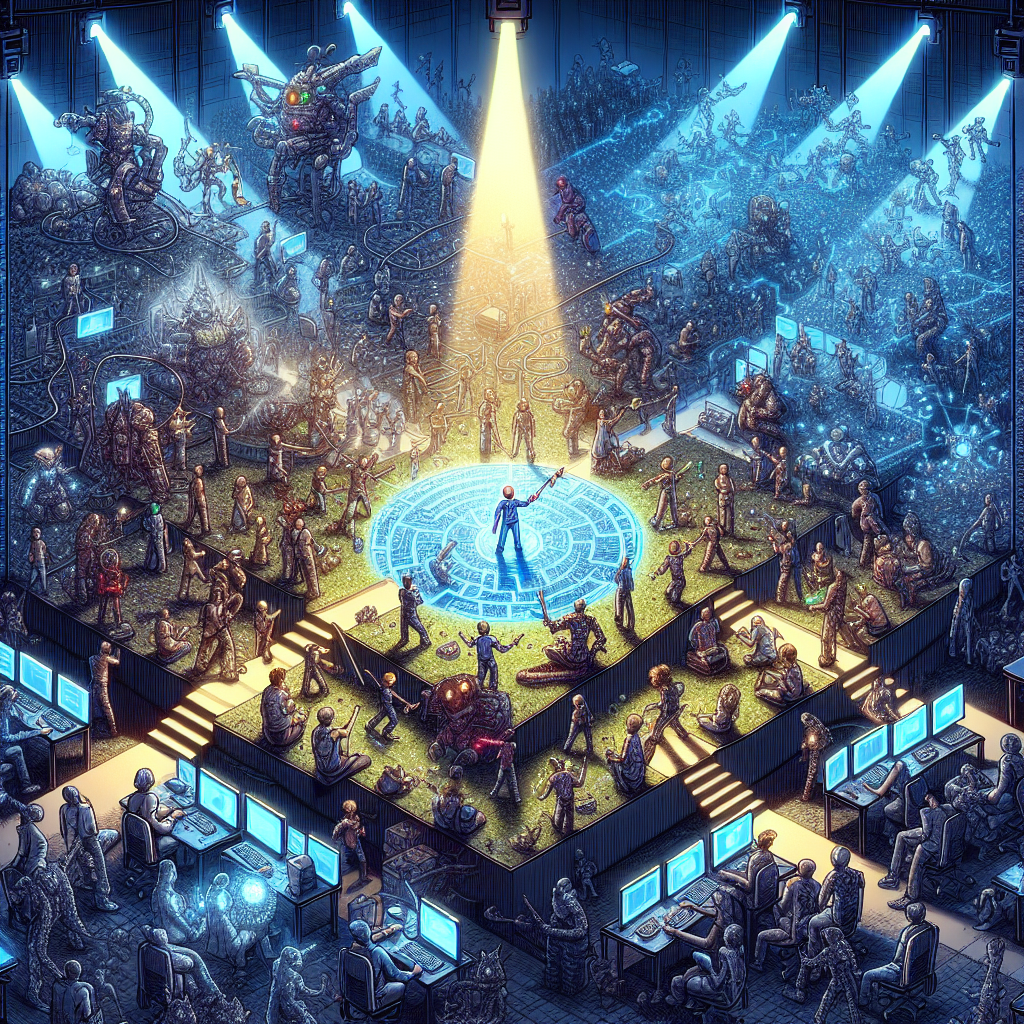Why MMO Stories Still Struggle to Compete with Single Player Games: Can Narrative Design in MMOs Ever Be Truly Great?
The massively multiplayer online (MMO) genre has long been hailed as the pinnacle of gaming experiences, offering vast, persistent worlds teeming with players and rich narratives. However, when it comes to delivering compelling stories, MMOs have consistently fallen short of their single-player counterparts. Despite the industry's best efforts, the narrative design in MMOs has yet to reach the same level of depth and emotional impact as the narratives found in single-player games. In this article, we'll explore the reasons behind this persistent challenge and examine whether MMO storytelling can ever truly compete with the narrative prowess of single-player experiences.The Inherent Challenges of Storytelling in MMOs
The primary challenge in crafting impactful narratives for MMOs lies in the very nature of the genre itself. MMOs are designed to be persistent, ever-evolving worlds where players interact with each other and the environment in real-time. This dynamic, ever-changing nature of MMOs presents several obstacles to delivering cohesive, engaging stories.The Difficulty of Maintaining Narrative Continuity
In a single-player game, the developer has complete control over the narrative arc and can ensure that the story progresses in a seamless, linear fashion. However, in an MMO, where players can join, leave, and interact with the world at any time, maintaining narrative continuity becomes an immense challenge.Players may experience the story at different paces, with some rushing through content while others take their time. This can lead to a disjointed narrative experience, where players may miss crucial plot points or feel disconnected from the overall storyline. Additionally, the need to accommodate a wide range of player preferences and playstyles can further complicate the narrative design, as developers must strike a delicate balance between allowing player agency and preserving the integrity of the story. The Challenges of Player Agency and Meaningful Choices Another significant hurdle in MMO storytelling is the need to balance player agency with the constraints of a shared, persistent world. In single-player games, developers can craft intricate, branching narratives where the player's choices have a tangible impact on the story's outcome. However, in an MMO, where multiple players interact with the same world simultaneously, this level of player agency becomes exponentially more complex to implement.
Developers must carefully consider how individual player choices can affect the larger narrative and the experiences of other players. Accommodating the potentially conflicting choices of thousands of players can quickly become an overwhelming task, often leading to more linear, less impactful storytelling. The Challenges of Delivering Personalized Narratives Single-player games often excel at providing a deeply personal narrative experience, where the player's choices and actions directly shape the story. In contrast, MMOs must cater to a diverse player base, each with their own unique motivations, playstyles, and narrative preferences.
Delivering a truly personalized narrative experience in an MMO can be incredibly challenging, as developers must find a way to create a sense of individual significance and agency within the context of a shared, persistent world. This often leads to more generic, one-size-fits-all storytelling that fails to resonate with players on a deeper, emotional level. The Limitations of Quests and Instanced Content Another factor that hinders the narrative design in MMOs is the reliance on quests and instanced content as the primary means of delivering story. While these gameplay mechanics can be effective in providing structure and direction, they can also contribute to the perception of a disjointed, impersonal narrative.
The Limitations of Quests
Quests, which are the backbone of most MMO storytelling, often feel like a series of disconnected tasks rather than a cohesive narrative. Players may find themselves jumping from one quest giver to the next, completing a series of objectives without a clear sense of how their actions are impacting the larger story.Additionally, the need to cater to a wide range of player levels and preferences can lead to the creation of generic, repetitive quests that lack the depth and emotional resonance of more personalized, character-driven narratives.

Players may feel that the stories within these instances are self-contained and have little impact on the overall narrative of the game. This can further contribute to the perception of a disjointed, fragmented storytelling experience. The Importance of Player Investment and Emotional Resonance One of the key reasons why single-player narratives often surpass those found in MMOs is the ability to foster a deeper emotional investment and connection with the player. In single-player games, developers can craft deeply personal stories that resonate with the player on a deeper level, often through the use of well-developed characters, meaningful choices, and impactful moments.
The Challenges of Maintaining Emotional Resonance in MMOs
Achieving this level of emotional resonance in an MMO is inherently more challenging. With a large, diverse player base, it becomes increasingly difficult to create a narrative that will strike a chord with each individual player. Players may have different motivations, personal experiences, and emotional needs, making it challenging to craft a story that will truly captivate and engage them.Moreover, the persistent nature of MMOs can make it challenging to maintain a consistent level of emotional investment over time. As the world and story evolve, players may feel disconnected from the narrative, unable to form a strong emotional attachment to the characters and events they encounter. The Importance of Meaningful Character Development One of the key factors that contribute to the emotional resonance of single-player narratives is the development of well-crafted, relatable characters. Players become invested in the journeys and struggles of these characters, forming a personal connection that drives the narrative forward.
In MMOs, however, the challenge of maintaining a cohesive, character-driven narrative is amplified. With multiple players interacting with the same characters and world, it becomes increasingly difficult to create a sense of personal investment and attachment. Players may feel that the characters they encounter are more like set pieces than living, breathing entities with their own motivations and struggles.

Embracing Player-Driven Narratives
One potential solution is to shift the focus towards player-driven narratives, where the players themselves become the driving force behind the story. This could involve creating more dynamic, reactive worlds where the actions and choices of individual players have a tangible impact on the larger narrative.By empowering players to shape the story through their own choices and interactions, developers can create a sense of personal investment and agency that can help bridge the gap between the emotional resonance of single-player narratives and the scale and persistence of MMOs. Leveraging Emergent Storytelling Another approach to improving MMO storytelling is through the use of emergent storytelling, where the narrative unfolds organically as a result of player interactions and environmental factors. This could involve creating dynamic, ever-evolving world events, player-driven conflicts, and narratives that are influenced by the collective actions of the player base.
By allowing the story to emerge from the interactions and choices of players, developers can create a sense of authenticity and unpredictability that can help to engage players on a deeper level. This approach could also help to address the challenges of maintaining narrative continuity and personalization in a persistent, shared world. Incorporating Cinematic Storytelling Techniques While MMOs have traditionally relied on quest text and dialogue boxes to convey their narratives, there is an opportunity to incorporate more cinematic storytelling techniques to enhance the emotional impact and immersion of the story.
This could involve the use of cutscenes, in-engine cinematics, and other visual storytelling methods to create more impactful, character-driven moments. By leveraging the power of visual media, developers can potentially create a stronger emotional connection between players and the narrative, helping to bridge the gap between MMO and single-player storytelling. Key Takeaways
- The inherent challenges of MMO storytelling, including maintaining narrative continuity, balancing player agency, and delivering personalized narratives, have made it difficult for the genre to match the emotional resonance of single-player narratives.
- The limitations of quests and instanced content as the primary means of delivering story in MMOs have contributed to the perception of a disjointed, impersonal narrative experience.
- Fostering a deeper emotional investment and connection with players is crucial for MMO narratives to compete with their single-player counterparts, but this is a significant challenge in a persistent, shared world.
- Innovative approaches, such as embracing player-driven narratives, leveraging emergent storytelling, and incorporating more cinematic storytelling techniques, offer promising avenues for improving the narrative design in MMOs.
- While the challenges of delivering truly great narratives in MMOs are substantial, the potential for meaningful advancements in this area remains, and developers who can effectively address these challenges may be poised to create the next generation of captivating MMO storytelling.



